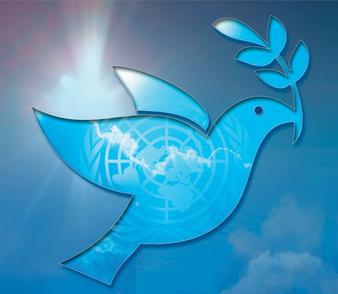September 21 marks the International Day of Peace, a recognition that promotes peace around the world in countries, cities, and communities. The 2017 theme is Together for Peace: Respect, Safety and Dignity for All. An event map indicates where events are being held around the world, including meditation, music, marches, and other events.
Put into action in 1981 by a United Nations Resolution, and celebrated for the first time a year later, the International Day of Peace reminds us all to bring peace into our lives, whether here at home or abroad. The International Day of Peace uses education as a means to encourage peaceful co-existence and safe, open dialogue as a means of understanding.
Some of us are more removed from speaking out for peace because our lives seem rather “peaceful” as they are. Yet for millions of people of all cultures, genders, ages, and economic classes around the world, they have only known war; they have not experienced peace.
When we consider war, we may think that battles are only fought with destructive weapons and artillery force. Yet, some people experience a war of a different kind as they try to simply live their lives as best they can. A war of words can be a form of abuse. A war-torn body can show signs of a domestic dispute and physical abuse. Belittling another human being can leave scars of emotional abuse.
Within families, wars are fought too, with relatives often choosing sides, deciding whom they will defend. Within companies, wars among departments or staff can occur when judgment and ego get in the way of collaboration and cooperation.
How are you making peace within your world? Are you encouraging those around you to share their thoughts and opinions through open dialogue? Are you trying to look at challenges and disputes, then identifying potential solutions? To make the world a better place begins with one person: You.
The United Nations has created 17 Sustainable Development Goals to improve the lives of every person on the planet, which include:
1. No poverty.
2. Zero hunger.
3. Good health and well-being.
4. Quality education.
5. Gender equality.
6. Clean water and sanitation.
7. Affordable and clean energy.
8. Decent work and economic growth.
9. Industry, innovation and infrastructure.
10. Reduced inequalities.
11. Sustainable cities and communities.
12. Responsible consumption and production.
13. Climate action.
14. Life below water.
15. Life on land.
16. Peace, justice and strong institutions.
17. Partnerships for the goals.
As you consider your contributions to your community and the world, what goals are you working on every day to create a better life for all? Peruse The Lazy Person’s Guide to Saving the World, compiled by the United Nations, and you will find many simple tasks that you can complete easily. Share it with co-workers. Create a conversation. Take action.

